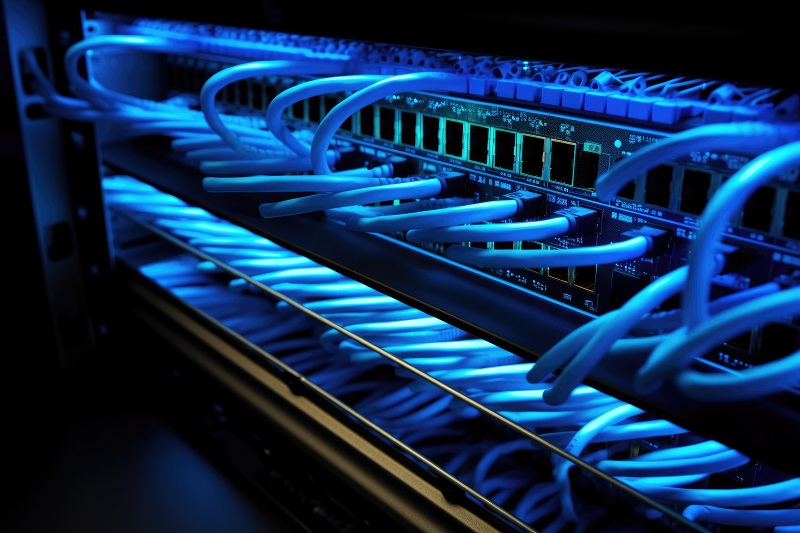Running servers around the clock generates more heat than most businesses realize. In large data centres, this heat can strain equipment, slow down performance, and raise electricity costs. Air systems help to a point, but their limits become clear as workloads expand.
This is why more companies now see value in liquid cooling solutions. The technology removes heat directly at the source, which reduces pressure on hardware and cuts unnecessary energy waste. For businesses that depend on reliable uptime, the switch is less about luxury and more about necessity.
Lower Energy Costs
Energy costs represent one of the largest expenses in data centre management. Fans and blowers used in air systems consume large amounts of electricity. As workloads expand, these costs only climb higher. Besides, liquid cooling works more directly by transferring heat through fluid, not just air.
This process requires less power and achieves the same, or even better results. Over months and years, the energy savings significantly reduce operating budgets and free resources for growth. Another benefit comes from predictability. Because liquid systems keep energy demand steady, companies face fewer spikes in their utility bills. Financial planning becomes easier when costs remain consistent.
Increased System Reliability
Heat damage is a leading cause of equipment failure. Servers that run at unsafe temperatures face shorter lifespans and more frequent breakdowns. Businesses cannot afford disruptions in the middle of critical tasks.
Liquid cooling keeps temperatures stable and prevents dangerous spikes. By protecting hardware, companies avoid downtime and extend the life of expensive systems. The outcome is a more reliable infrastructure and fewer replacement costs.
Greater Space Efficiency
Space inside commercial facilities costs money, and wasted square footage reduces profitability. Air cooling relies on large ducts, vents, and racks of fans. All that equipment takes up room that could otherwise hold valuable servers or workstations.
Liquid cooling requires slimmer infrastructure. Tubes and compact pumps do the same job while occupying less space. This leaves room for higher server density and more flexible layouts. For expanding companies, this space savings is invaluable. They can increase capacity without moving to a larger building, which helps control costs.
Stronger Environmental Responsibility
Sustainability has moved from a trend to a business standard. Clients and partners now expect companies to act responsibly with resources. Air cooling wastes large amounts of energy, which adds to environmental impact.
Liquid cooling systems use less power and contribute to greener operations. This reduces carbon emissions and demonstrates a clear commitment to responsible practices. Businesses that adopt this technology can highlight their eco-friendly progress.
Reduced Noise Levels
Noise inside server rooms is more than an inconvenience. Constant fan activity creates a disruptive environment for staff who must work nearby. It can reduce focus, slow down maintenance, and make long shifts more stressful.
Liquid cooling removes most of that mechanical noise. With fewer fans running at full speed, facilities stay quieter. Employees benefit from calmer surroundings, which support better focus and efficiency. Quieter systems also improve safety. Workers can communicate clearly without competing with loud background noise. This helps avoid mistakes during sensitive tasks.
Flexible Integration Options
Every business has unique needs when it comes to hardware layout. Air cooling systems limit that flexibility. Large fans and air ducts force companies to design around the cooling system, not the other way around.
Liquid cooling adapts to a wider range of setups. Pipes and cooling plates can be arranged to fit the space and the hardware in place. This adaptability allows upgrades without requiring a full redesign of the facility. The flexibility also makes scaling easier. As companies add more equipment, liquid cooling integrates smoothly with the new systems. This reduces disruption and keeps growth on track.
Competitive Advantage
In industries where uptime, efficiency, and reputation matter, technology choices directly affect competitiveness. A single outage caused by overheating can damage client trust. Traditional cooling methods struggle to keep pace with today’s workloads.
By adopting liquid cooling solutions, businesses stay ahead of risk. They deliver consistent service, meet client expectations, and reduce operating costs. This advantage makes them stronger against competitors that delay upgrades.
Long-Term Cost Control
At first glance, liquid cooling may seem like a bigger investment. Installation requires planning and the right expertise. Yet the returns far outweigh the initial costs.
Lower energy bills, fewer hardware replacements, and less downtime create significant savings. Over the years, businesses recover the upfront expense many times over. This financial stability secures both short-term efficiency and long-term growth.
Businesses continue to outgrow the limits of traditional air systems. Heat, noise, and high energy consumption create unnecessary risks and costs. Liquid cooling provides clear solutions to these problems. From efficiency gains and hardware protection to sustainability and quieter workplaces, the benefits are undeniable. Companies that switch now position themselves for reliable operations and stronger growth in a competitive world.






